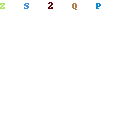The Power of 5 Whys (https://en.wikipedia.org/wiki/5_Whys) is an old but perhaps not well known technique for reaching a root cause of a problem. It’s origins, as most things lean, come from Taiichi Ohno from Toyota (https://en.wikipedia.org/wiki/Taiichi_Ohno), based off his many teachings of lean manufacturing. So much of the lean manufacturing concepts have been incorporating into pretty much every industry, but also very much into the tech industry. It’s hard not to talk to someone who is in a startup and not have the word “lean” come up. “Oh, we are following the lean startup model”. The lean startup model is all too common and a very large number of successful startups follow it, and for good reason!
I find that as a Solutions Architect, the technique of the 5 whys is always an invaluable tool for me in my day to day activities. I know that there are tons of blog posts written on the subject, but I’d like to frame this one from the perspective a Solutions Architect.
As an Solutions Architect, or SA as we are often referred to as, we are often pulled in 50 different directions at the same time. Being able to identify a problem and solve it quickly and efficiently is one of the trade marks of an excellent SA.
Let’s take a recent example that I had with one of my customers and how I used the power of the 5 whys to not waste time in finding the root cause of an issue and then was able to quickly create a solution to the problem.
My day job as an SA today is in the space of Media Entertainment. I help my customers by enabling them to create personalized recommendation carousels, much like Netflix does.
Example of Using The Power of the 5 Whys
One of my customers were complaining about the quality of results that they were seeing for a specific carousel. So here is when I went into my 5 whys strategy:
1st Why
The “Why”: Why were the results not in line with what my customer was expecting to see?
The Answer: Because the results that were coming through did not align with previous versions of the same carousel and because the results didn’t make sense to the user.
2nd Why
The “Why”: Why were the results not aligning and why didn’t they make sense to the user?
The Answer: Because there was a change made from the previous version of the recommendation.
3rd Why
The “Why”: Why was there a change made from the previous version?
The Answer: To improve the quality of the recommendation.
4th Why
The “Why”: If the goal was to improve the quality of the recommendation, why was the recommendation actually performing worse?
The Answer: Because the algorithmic change that was made to the recommendation was causing the results to return differently due to a config parameter that needed to be specified and wasn’t.
5th Why
The “Why”: Why wasn’t the appropriate config parameter applied to the recommendation algorithm?
The Answer: Because I had overlooked that specific configuration value! 🙂
So as you can see, by going down the path of the 5 whys, I was able to trace the problem down pretty quickly and find the root cause, which in this case was just a simple config change that was required and then voila, the recommendation not only showed the results they were expecting but it even exceeded the customers expectations and proved that this version of the recommendations were much better than the previous version.
Using the power of the 5 whys is one of the greatest tools in not just a Solution Architects toolset, but I believe any professional. It’s simplicity and speed of triaging is simply unparalleled and makes it such a valuable tool.
If you use the power of the 5 whys at your job, I would love to hear some examples of how it has helped you, so please leave a comment with your story!
